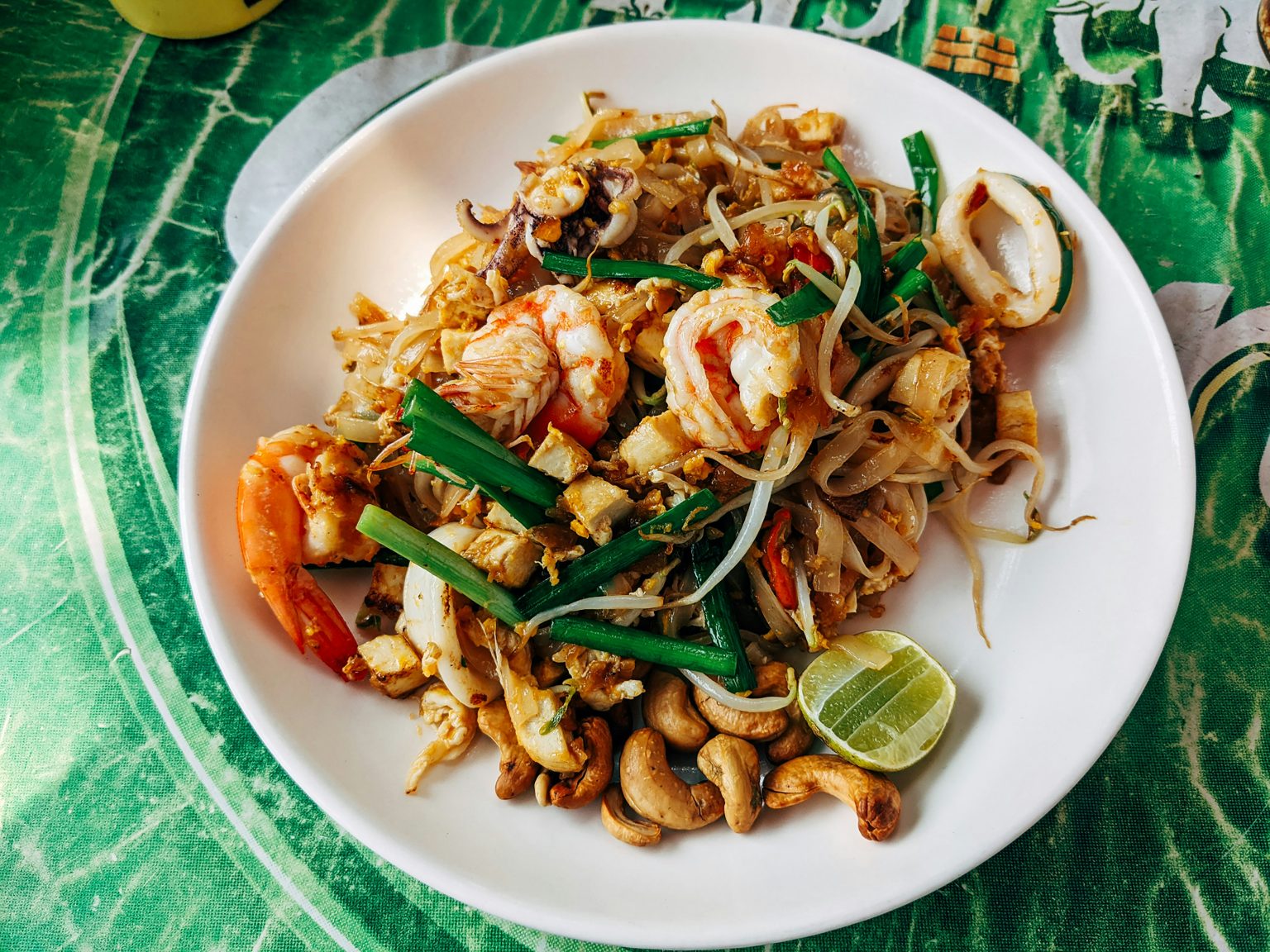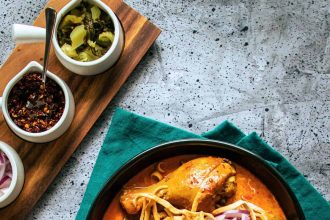Pad Thai: History and Classic Recipe
If you’ve ever wandered through the street food stalls of Bangkok, odds are good you’ve caught a whiff of something sweet, tangy, and just a little bit smoky. Maybe you watched as a vendor tossed together a wokful of noodles, shrimp, tofu, sprouts, and crunchy peanuts, then handed you a plate dusted with chili flakes and crowned with a lime wedge. That’s Pad Thai, and it’s everywhere: in night markets, food courts, and, if you’re lucky, in your own kitchen back home.
But for a dish that feels like it’s been around forever, Pad Thai’s story isn’t what most people expect. It’s not some ancient recipe passed down from mysterious royal courts, nor is it the “national dish” of Thailand just because it tastes that good. Pad Thai’s rise is actually tied up with politics, war, and the kind of national branding campaign that would make modern marketers proud (Smithsonian Magazine).
The Myth of Old-World Pad Thai
Let’s get one thing out of the way: Pad Thai is not centuries old. In fact, it’s barely a hundred. Before the 1930s, there was almost no record of anything like it in Thai cookbooks. Noodles themselves weren’t a big part of Thai cuisine; rice was king, and most stir-fried noodle dishes came from Chinese immigrants (BBC, Wikipedia).
So how did Pad Thai end up on nearly every menu from Chiang Mai to Manhattan?
A Nation-Building Noodle
Enter Plaek Phibunsongkhram, or “Phibun” for short, the prime minister of Thailand in the late 1930s and 40s. He wanted to modernize the country and build a sense of Thai identity, especially as World War II loomed. At the time, rice shortages made feeding the population tricky, and Phibun was keen on promoting dishes that used less rice (Smithsonian Magazine, Business Insider).
The solution? Noodles. They were cheap, filling, and could stretch a small amount of rice into a full meal, especially when mixed with protein and vegetables. Under his government, a contest was held to create a new national noodle dish. The result was something pretty close to what we now know as Pad Thai: thin rice noodles stir-fried with tamarind, fish sauce, dried shrimp, tofu, eggs, and peanuts, topped with fresh lime and sometimes a handful of garlic chives or bean sprouts (Atlas Obscura, Wikipedia).
Phibun’s government even distributed carts and recipes to street vendors, encouraging them to sell Pad Thai as a symbol of the new, unified Thailand. The dish was a hit (Smithsonian Magazine).
A Dish Designed for Balance
At its core, Pad Thai is all about balance. Every bite is a little bit sweet (from palm sugar and tamarind), salty (fish sauce), sour (lime, tamarind), spicy (chili), and crunchy (peanuts, fresh veggies). The shrimp and tofu combo is classic, but you’ll find versions with chicken, pork, or just eggs if you wander far enough (BBC).
No two cooks make it exactly alike. Some add dried shrimp for extra umami, others throw in pickled radish or preserved turnip. What matters most is that each element does its job, and the noodles don’t get too soggy in the wok.
Pad Thai Today
Pad Thai’s story is tied up in Thailand’s own journey, part Chinese influence, part Thai ingenuity, and a dash of political ambition (Smithsonian Magazine). Today, it’s more than just comfort food. It’s a symbol of how a nation can reinvent itself, one bowl at a time.
So next time you tuck into a plate, remember: you’re not just eating noodles. You’re tasting a slice of history, a dish that started as a government experiment and ended up a global superstar (Wikipedia).
And if you’re feeling adventurous, grab a wok and give it a try at home. Just don’t skimp on the lime.
Check out our master guide on Thailand below!
The Ultimate Thailand Travel Guide: Everything You Need to Know Before You Go
Historical Pad Thai Recipe
If you want a Pad Thai recipe grounded in Thai tradition, check out this version shared by Thai native and cooking teacher Kasma Loha-unchit. Her recipe and historical background are featured on Thai Food and Travel, which is an excellent resource for authentic Thai recipes and culinary history.
Classic Pad Thai (from Kasma Loha-unchit)
See the full recipe and historical context here.
Ingredients:
- 8 ounces dried rice noodles
- 1/4 cup vegetable oil
- 2 tablespoons chopped garlic
- 8 ounces fresh shrimp, peeled and deveined
- 4 ounces firm tofu, cut into small sticks
- 2 eggs
- 1 cup fresh bean sprouts
- 1/3 cup chopped roasted peanuts
- 2 tablespoons fish sauce
- 1-2 tablespoons sugar
- 2-3 tablespoons tamarind juice
- 1 teaspoon chili flakes (optional)
- 2 stalks green onions, cut into 1-inch pieces
- Lime wedges
Instructions:
- Soak the rice noodles in cool water until soft, about 40 minutes, then drain.
- In a wok, heat oil and add garlic, shrimp, and tofu. Stir-fry until the shrimp turn pink.
- Push ingredients to one side and crack eggs into the wok. Scramble lightly, then stir to combine.
- Add noodles, fish sauce, sugar, and tamarind juice. Stir-fry until noodles are tender.
- Toss in bean sprouts, green onions, and peanuts. Mix well.
- Serve with lime wedges and extra peanuts or chili flakes as desired.
Enjoy!









